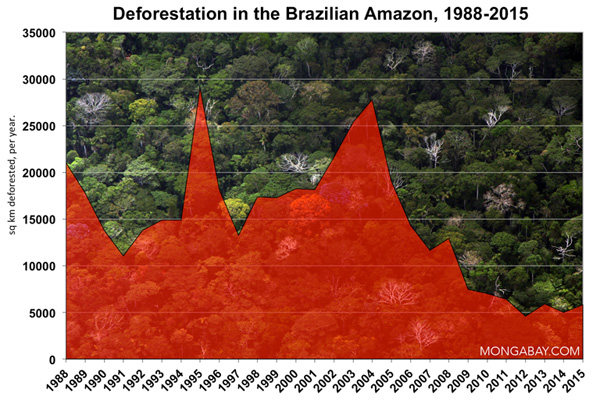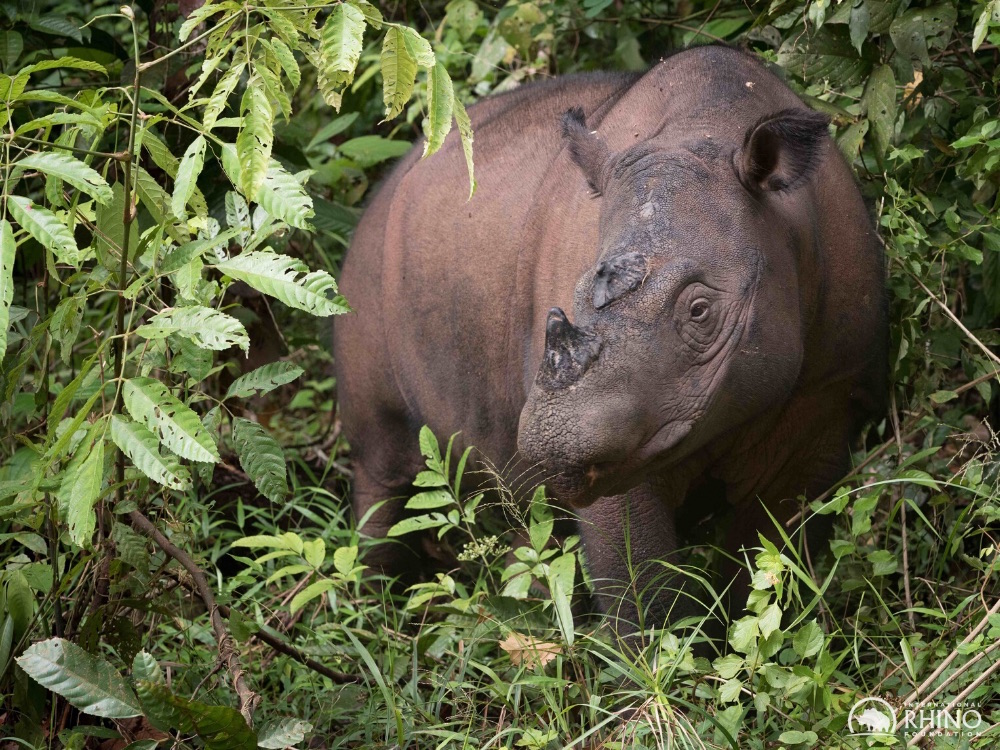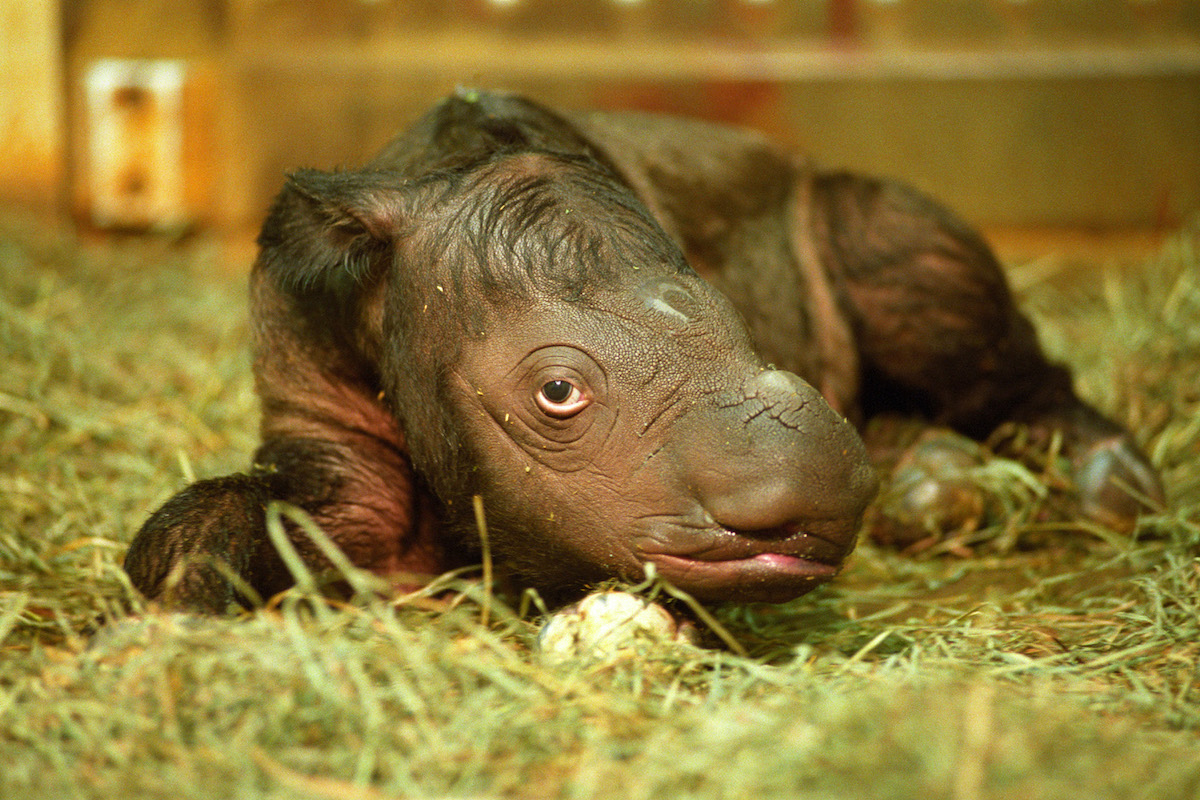
Annual deforestation in the Brazilian Amazon, 1988-2014.
Preliminary data released by the Brazilian government suggests that deforestation in Earth’s largest rainforest slowed 18 percent over the past year.
Figures published Wednesday by Brazil’s National Space Research Institute (INPE) show that 4,848 square kilometers (1,871 square miles) of forest — an area about the size of the state of Rhode Island or the country of Brunei — were cleared between August 2013 and July 2014. That compares to 5,891 square kilometers in the year earlier period and represents the second lowest figure since annual record-keeping began in 1988.
Forest loss was concentrated in the Pará, Mato Grosso, and Rondônia, states that account for the bulk of the agricultural frontier in the country. Both Pará and Rondônia showed marked decreases versus the year prior. The biggest increases in forest loss occurred in Acre and Roraima.
The figures are preliminary, based on analysis of 89 Landsat images. Brazil typically releases final data in the third quarter of the following year.
The data confirms that deforestation in the Brazilian Amazon remains very low by historic standards. The estimate for 2013-2014 suggests that loss was 13 percent below the target set in 2008 for reducing deforestation 80 percent by 2020.
Nonetheless data from the past three months has raised concerns among environmentalists that deforestation may be on an upswing. Monthly reports released by Imazon, a Brazilian NGO, show that loss is pacing 226 percent of last year’s rate. Furthermore there are worries that deforestation is shifting to ecosystems outside the Amazon — especially in the woody grassland known as the cerrado.
Accordingly, despite last year’s drop in deforestation, activists are calling for stronger measures to combat forest clearing.
“The decrease in deforestation rates announced by the government is a relief after last year’s dramatic increase. But deforestation is still a major threat and Brazil can do even better. In order to permanently halt the destruction of the Amazon, the government must now commit to a policy of Zero Deforestation,” said Paulo Adario, Senior Forest Strategy Advisor for Greenpeace International, in a statement. “Without forests, there is no rain. Without rain there is no water for our homes and farms.”
The Brazilian Amazon contains the largest extent of rainforest in the world. Nearly two-thirds of the Amazon lie within the borders of Brazil.
Just under 20 percent of the Brazilian Amazon has been chopped down since 1978, but annual deforestation has slowed dramatically since 2004 due to a combination of economic trends and direct interventions including improved monitoring, new protected areas, stronger law enforcement, pressure from environmental groups, and private sector initiatives. A study published this past June estimated that the reduction in Brazilian deforestation prevented 3.2 billion tons of carbon dioxide emissions, roughly equal to the savings that would have been achieved by taking all cars off American roads for three years.


















